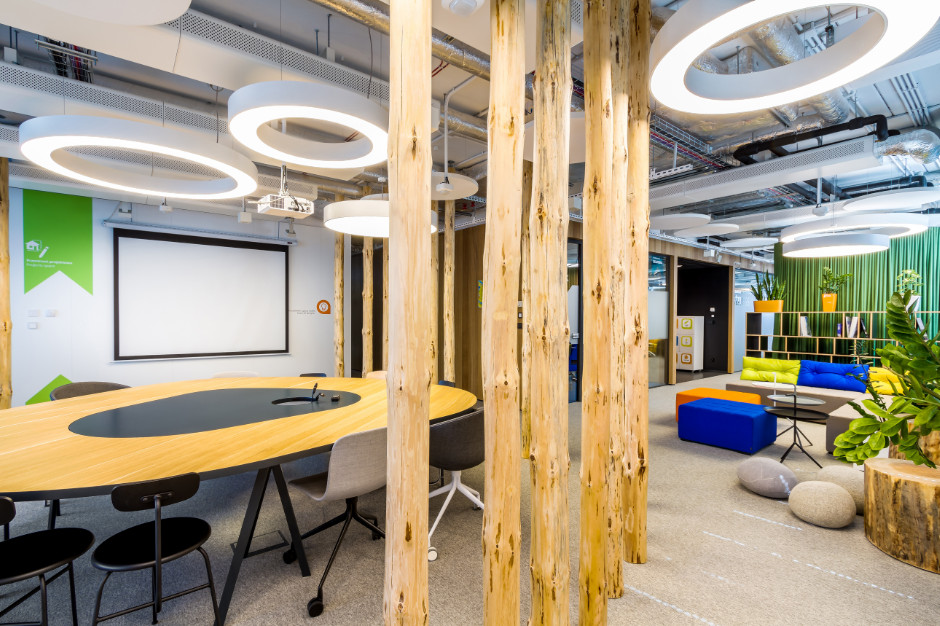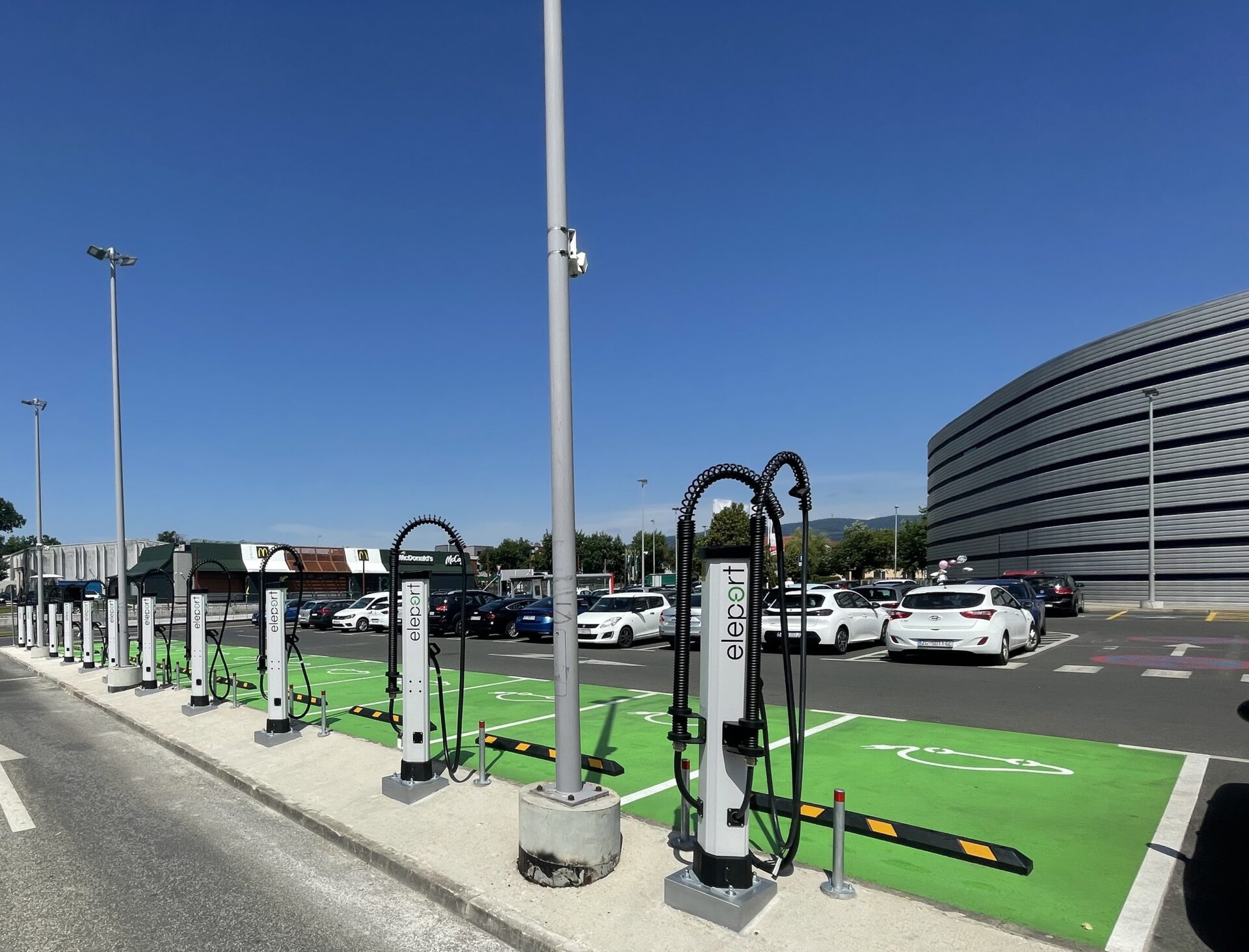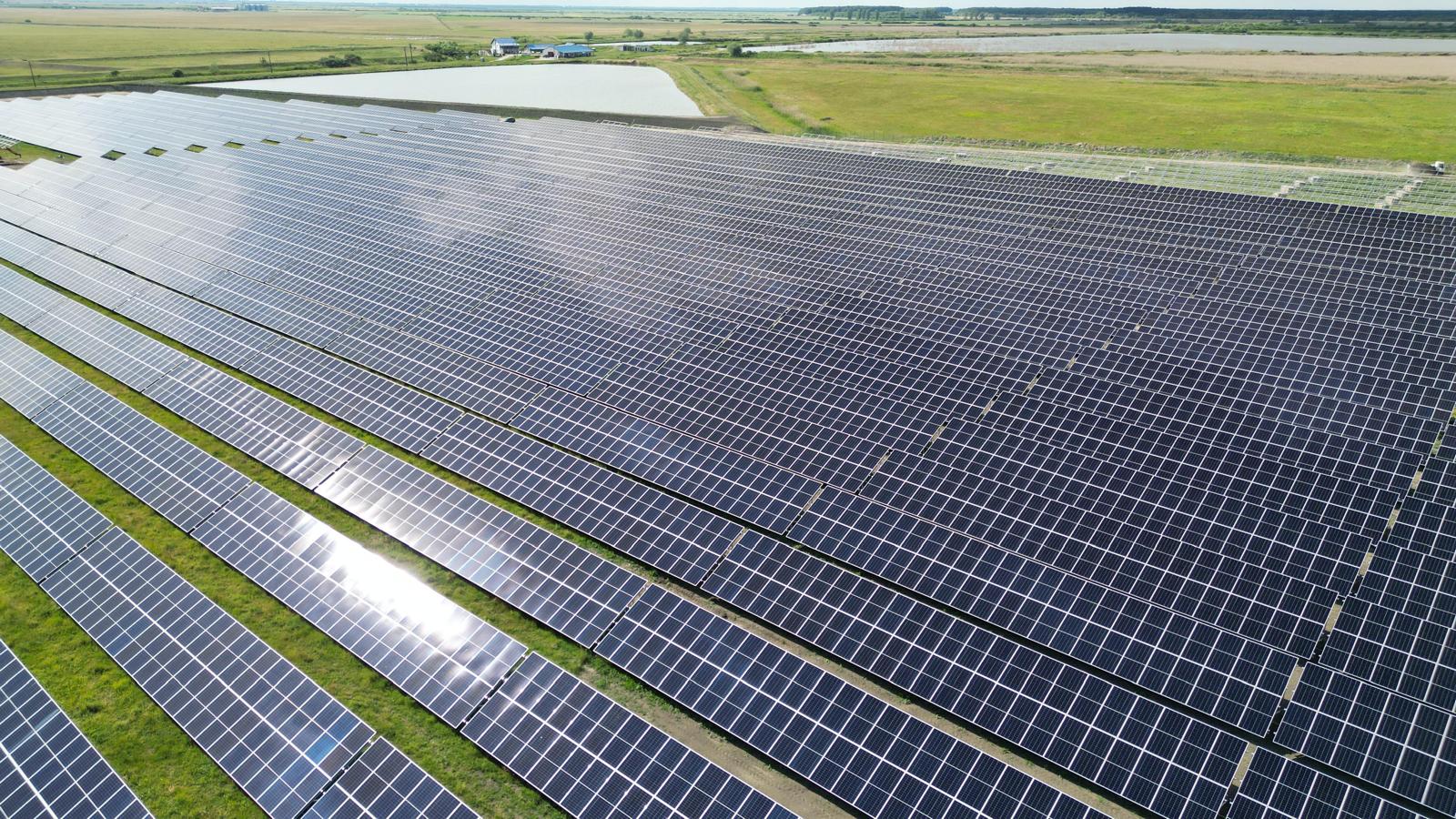Environmental certificates for office buildings have become a pre-requisite on the market. Multi-level certification criteria take in almost every aspect of office schemes – from air-conditioning systems to materials used during their development. In this way the interior of Skanska Property Poland’s office in Atrium 1 building in Warsaw has been recently LEED CI Platinum certified. This is slated as the first such highly rated LEED CI certificate in Poland.
The LEED Commercial Interior certificate – LEED CI in short, focuses on both new and existing office space. There are around 7,000 such certificates worldwide. In modern schemes, which serve as oases of innovative solutions, this is truly a trendsetter. LEED CI signals that employers care about the prestige of being “eco” and, furthermore, asserts that employees can count on high standards.
Office tenants and building owners in the CEE region used to very rarely apply for LEED CI. According to the US Green Building Council, an American certifying authority, the number of certificates in the CEE region can be counted on the fingers of two hands. For example, there are ten in Hungary but there is only one in Prague. Furthermore, there are none in either Slovakia or Romania. In Poland, there are ten and they include all of the new office space where Skanska’s local units operate. The company is one of the pioneers of LEED certification in Europe.
“The expansion of LEED CI certificates is just a matter of time. The interiors of our first Warsaw-based office in Deloitte House obtained an LEED CI Silver certificate back in 2010. The Platinum level for interiors of our Atrium 1 office illustrates the international recognition for these solutions that we also offer our partners. Through our own actions we were able to prove that such certification can pay off on numerous levels – it shows that we are both efficient and environmentally friendly and, furthermore, that working in our office is a very pleasant experience. People are the most important beneficiaries of the applied solutions and, as a consequence, should be provided with the highest level of comfort and the best working conditions possible during their workdays in the office. All of our tenants can count on the support from our specialists in obtaining LEED CI certificates,” commented Katarzyna Zawodna, Managing Director at Skanska Property Poland.
The difference between LEED CI and the standard LEED Core&Shell which focuses on entire buildings is the attention paid to an office’s fit-out. LEED CI certification requirements may include, for example, furniture made from recycled materials, finishing produced from biodegradable components or use of paint with a low level of volatile organic compounds. Such solutions have been applied by Skanska.
“Wood that was used to produce our furniture comes from ecological FSC forests. We moved a huge amount of furniture from our previous office. Furthermore, all materials used during the construction works were imported regionally,” said Justyna Olczak, Sustainable Development Specialist at Skanska Property Poland. However, the most impressive effects were achieved with regard to projected savings. “We ‘set records’ in terms of water efficiency. By using rain water and grey water to flush toilets, as well as water-efficient faucets, we were able to reduce water consumption by 70 percent, when compared to local norms. When it comes to energy savings, we reduced energy consumption by 40 percent thanks to daylight control systems, energy-efficient lighting, motion sensors and EnergyStar certified office equipment,” summarized Justyna Olczak.
As in every LEED certificate, apart from the required criteria, USGB also allows freedom in terms of innovations and tenants’ ideas, meaning additional points towards certification can be awarded. Skanska achieved USGBC’s special recognition by organizing “green education” training for its employees. “Each worker segregates waste that is produced – paper, aluminium, glass, plastics, batteries and various packages. In total, we have seven different containers. In our office, we have applied a very good information system – specific signs inform us about the need to turn off the lights and explain how to optimally use office equipment. For example, all printing is by default done two-sided, and in black and white. Furthermore, apart from training connected with green solutions and ecology both in work and everyday life, we have also introduced office bicycles that our employees can use,” underlined Justyna Olczak.
Does designing office space in accordance with the criteria of LEED CI have to be expensive? “Not necessarily. In 2005, when environmentally-friendly materials were not standard, I would say yes. Today however, we have a wide choice of materials that are provided by environmentally conscious manufacturers. Furthermore, we give the opportunity to obtain office certification during the design stage. This allows to reduce the costs of achieving specific standards,” asserted Justyna Olczak.
Therefore, it is worth focusing on additional certificates for the office that we want to fit out to attain achievable savings for the present as well as the future. For generation Y, which in a couple years’ time will account for 75 percent of overall employees, the employer’s image and working environment are becoming increasingly important. A green approach towards business will almost certainly pay off.
Due to LEED CI’s focusing only on internal aspects, many tenants have the impression that this certificate is the easiest one to obtain. This is not true because good paint and lining made from recycled materials are not enough. The certificate includes six complex categories such as energy and water-efficiency and the quality of internal environment. However, it is worth underlining that LEED Core&Shell criteria and LEED CI overlap each other in many areas. So in a green building, we can be sure that the process of obtaining CI certificate can be much easier. It is beneficial if a certified LEED AP specialist can provide support for the building’s tenant or owner throughout the entire process.
“Because building certification is a standard for us, in Skanska Property Poland we have seven such specialists. Furthermore, within the Skanska Customer Care Program, our Regional Asset Coordinators (RAC) support our tenants during the process of office arrangement as well as its potential certification. In addition to preparing the necessary documentation, we also offer fit-out adjustments in accordance with USGBC’s requirements. This includes, among other things, the selection of both finishing materials and office equipment,” explained Łukasz Kwieciński, Asset Manager at Skanska Property Poland.
Skanska’s office located on the 32nd floor of the Empire State Building in New York is an often mentioned example of this. The company renovated the office space and applied numerous green and energy efficient solutions, including intelligent lighting and air-conditioning systems. Thanks to this, energy consumption has been reduced by 35 percent. The return on investment was expected to be achieved in 15 years, however, it was able to do this in just four. In 2009, Skanska’s above mentioned floor was LEED CI Platinum certified. The owner of the Empire State Building decided to apply for a certificate for the whole building. In 2011, it was certified with a LEED Operation and Maintenance certificate: Existing Building at the Gold level standard.
Skanska’s global experience in conducting similar schemes resulted in the company being invited to evaluate the Palace of Culture and Science in Warsaw in 2013. Skanska pointed out the modernization and certification opportunities on one of its floors. The audit showed that working comfort can be significantly increased, while bills can be reduced.







